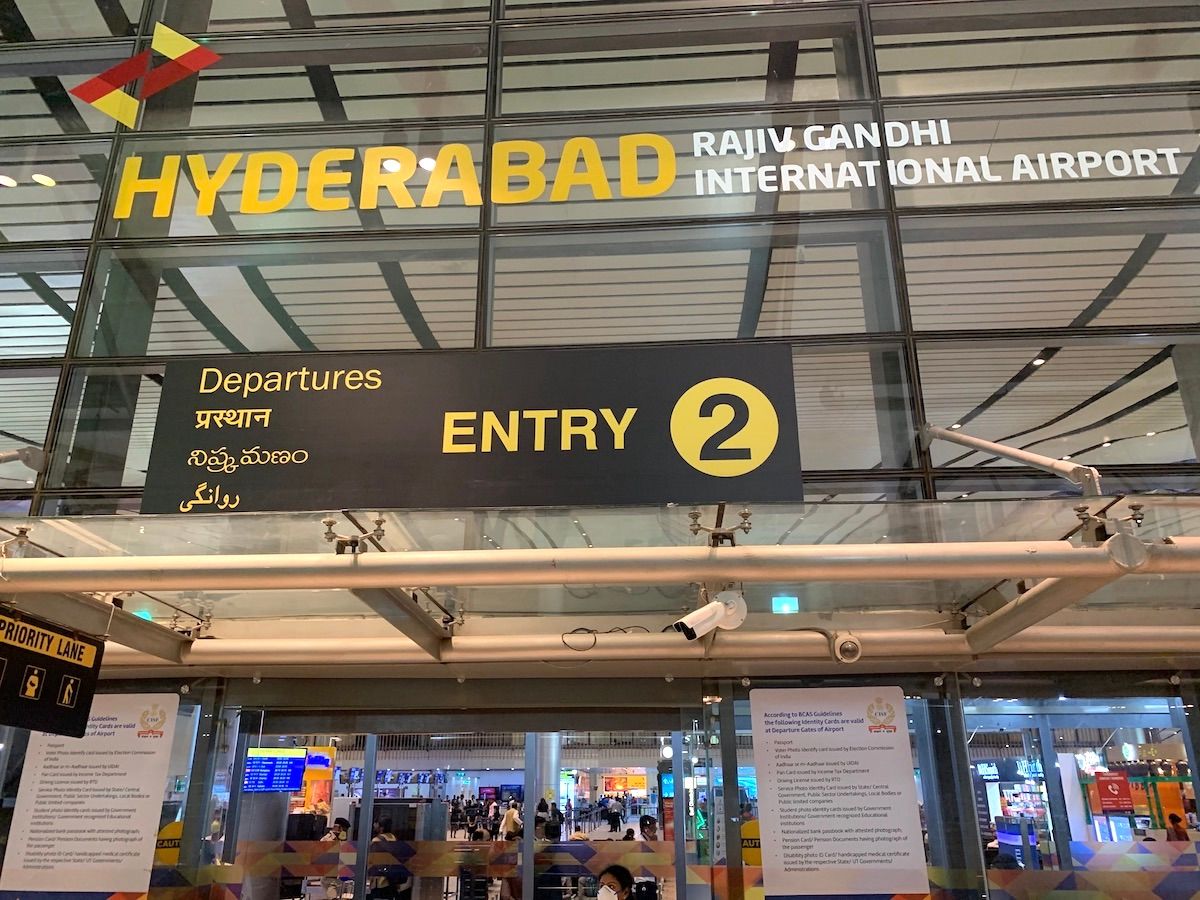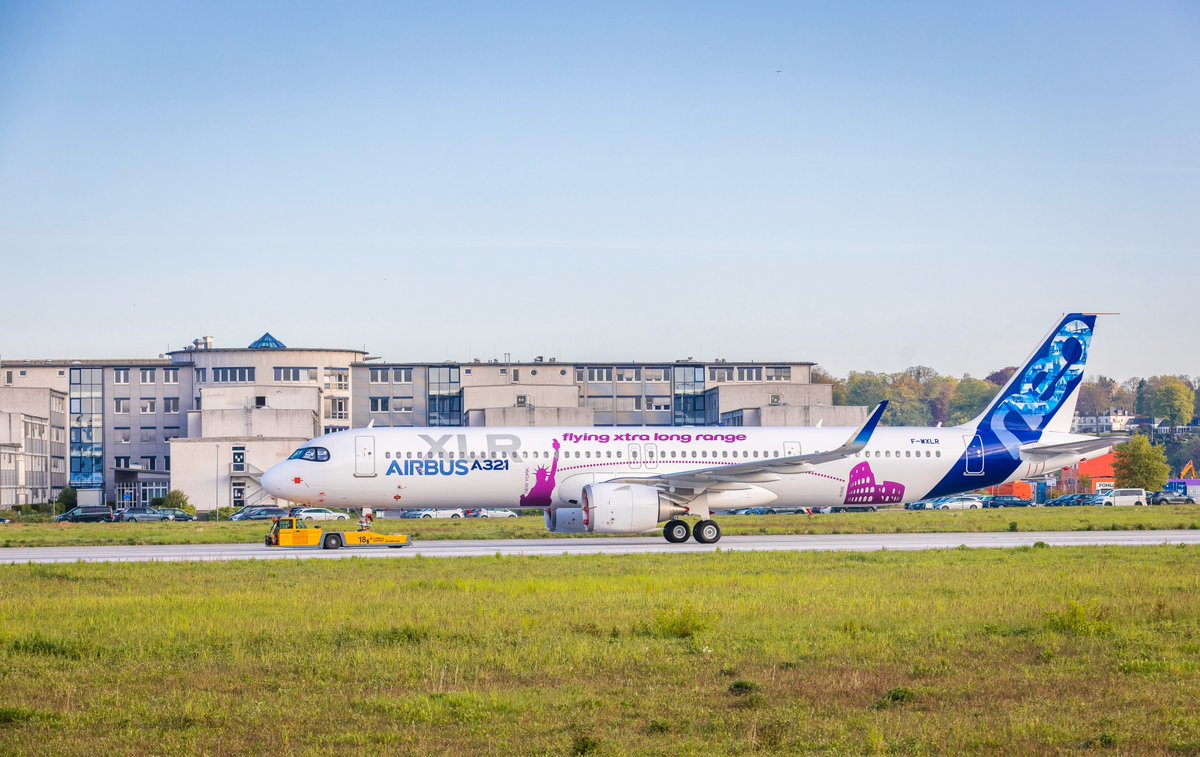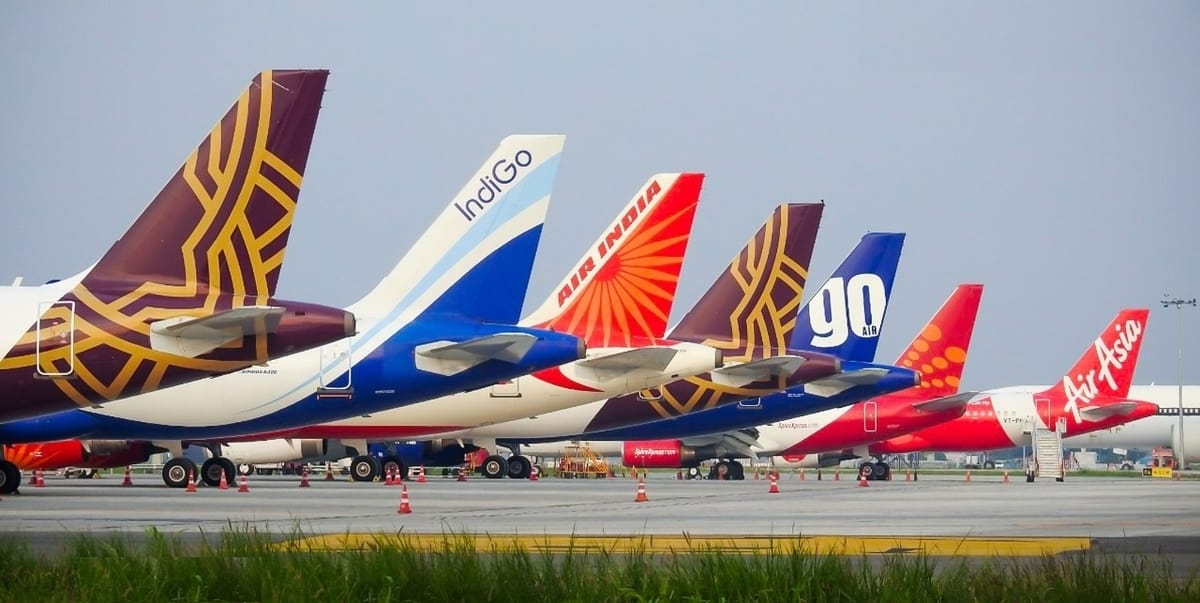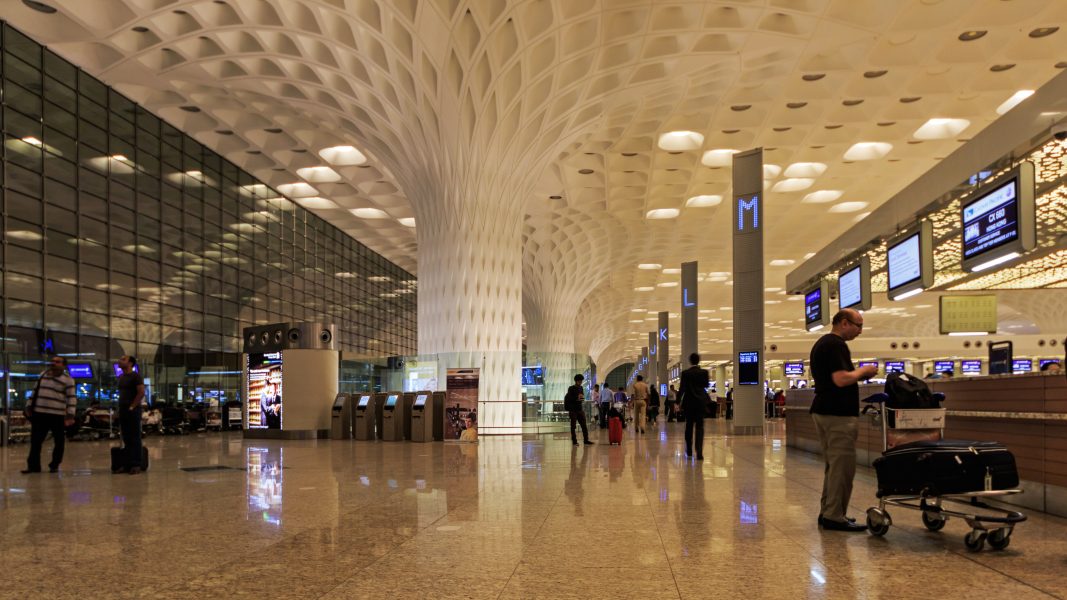India and Canada to operate more flights by expanding bilateral air service agreement
Radhika Bansal
05 May 2022

India and Canada on Wednesday, May 4 discussed the expansion of a bilateral air service agreement that will allow more flights between the two countries.
Union Aviation Minister Jyotiraditya Scindia, who is on a nine-day visit to the US and Canada, met Canadian Transport Minister Omar Alghabra.
"I personally thanked my counterpart for India’s help in repatriating Canadians stuck in India at the beginning of the pandemic,” Alghabra stated on Twitter after the meeting. Alghabra said he had a productive meeting with Scindia regarding issues of mutual importance to Canada and India.
https://twitter.com/OmarAlghabra/status/1521613161882963969
Canada has a huge number of people of Indian descent in its total population.
"We spoke about expanding the Air Transport Agreement allowing for more flights between the two countries. Further cooperation at International Civil Aviation Organisation (ICAO) on Annex 13 and other issues,” he mentioned.
He said he is looking forward to more conversations to open up travel between the two countries including flights to Amritsar.
India and Canada to operate more flights by expanding bilateral air service agreement
For the airlines of a particular country to operate international flights to another country, the two sides have to negotiate and sign a bilateral air services agreement, which decides how many flights (or seats) per week can be allowed to fly from one country to the other.
Once such an agreement is signed, each country is free to allocate the bilateral rights to its respective airlines. Even after such flying rights are allocated to an airline, it must have slots at both airports to start flight operations.
A slot is a date and time at which an airline’s aircraft are permitted to depart or arrive at an airport. The slots are allocated by a committee that consists of civil aviation ministry and regulatory officials, airport operators and airlines, among others.
At present Air India and Air Canada operate 29 non-stop flights per week between Canada and Delhi.
At present Air India and Air Canada operate 29 non-stop flights per week between Canada and Delhi. There are demands to start direct flights between Amritsar and Canada while Mumbai airport is looking to re-establish a connection with Canada.
However, the launch of new routes would also depend upon the geopolitical environment. In fact, Air Canada is suspending its thrice-weekly Vancouver-Delhi service from June because of restrictions on the use of Russian airspace.
Scindia is on an official visit to the US and Canada has met business leaders
Apart from the plan to increase air connectivity, the two ministers also discussed furthering technical cooperation in civil aviation. Scindia who is on an official visit to the US and Canada has met business leaders, visited manufacturing plants and also articulated India’s efforts on lowering carbon footprint in aviation.
ALSO READ - All Indian airports to be carbon neutral in near future – Jyotiraditya Scindia
“India is working towards making its airports carbon neutral shortly to emerge as a responsible player in the international civil aviation industry,” Scindia said.
India on the other hand committed in the COP-26 meeting in 2021 to achieve net-zero emissions by 2070 and is of the view that de-carbonisation efforts should be equitable for all countries.
Read next
Hyderabad International Airport to be operated by the GMR group for the next 30 years
Radhika Bansal
05 May 2022

The term of the GMR Hyderabad International Airport (GHIAL) concession pact for the Rajiv Gandhi International Airport (RGIA) has been extended for another 30 years, the company informed the exchanges. Hyderabad airport is the fourth biggest airport in the country.
The airport, a step-down subsidiary of GMR Infrastructure (GIL), received a letter of confirmation from the Ministry of Civil Aviation (MoCA), it said in a filing on May 4. The extension is from March 23, 2038, up to March 22, 2068, for terms of the agreement dated December 20, 2004.
The airport was commissioned in a record 31 months and inaugurated in March 2008 with an initial capacity of 12 million passengers per annum (MPPA), which jumped to 21 MPPA before the Covid-19 pandemic in 2019. The present expansion will raise the capacity to 34 MPPA.
Hyderabad International Airport to be operated by the GMR group for the next 30 years
It is India’s first Greenfield airport under the public-private partnership (PPP) model and is currently the only Indian airport with an end-to-end digital passenger processing system, the company said.
Hyderabad Airport is now at the forefront of leveraging technology to deliver a seamless and enhanced experience to travellers. It is the first airport in India to introduce a unique e-boarding solution.
In terms of cargo, the airport can handle 150,000 tonnes of cargo per annum. The master plan envisages flexibility to increase ultimate capacity to more than 100 MPPA in phases.
Hyderabad International Airport is India’s first Greenfield airport under the public-private partnership (PPP) model
RGIAL is a “gateway” to the south and central India, the company said, adding that it has “established the city prominently on the global aviation map” and “continues to contribute to the prosperity, growth and all-round economic development of the region”.
GMR Group says it is the largest private airport operator in Asia and the second largest in the world with a passenger handling capacity of over 18.9 crores annually. It operates airports in Delhi, Hyderabad and Cebu in the Philippines.
It recently bagged the development and operation rights of Kualanamu International Airport in Medan, Indonesia. The Group is currently developing three greenfield airport projects — Goa and Bhogapuram airports in India and Crete airport in Greece.
Read next
The Directorate General of Civil Aviation (DGCA) will be dispatching teams to check each aircraft thoroughly with common complaints being broken hand rests, meal tables, window panes and torn seats.
Carriers in India with weak finances and/or an ageing fleet will now have their aircraft cabins and the aircraft thoroughly checked when parked at night across major airports in India, reports say.
Aircraft with issues that could potentially affect the safety of the traveller will be grounded and allowed to fly again only after the problems are addressed, a senior regulatory official told TOI.
DGCA to begin conducting night inspections of the cabins of older planes
Following tweets of shabby interiors, DGCA recently grounded a SpiceJet Boeing 737 in Bengaluru and an Air India Airbus A320 in Kolkata.
ALSO READ – SpiceJet grounds its B737 aircraft after passenger complains about the cabin’s poor condition
Last month, authorities ordered a SpiceJet Boeing 737 airplane to be grounded following a passenger’s tweet, which contained not-so-impressive pictures of the plane. The images showed scruffy cabin interiors and questionable conditions of some panels that appeared broken or missing.
ALSO READ - DGCA asks Air India to repair its aircraft’s shabby interiors
A few days later, another passenger on an Air India flight took pictures of the Airbus A320’s shabby interiors, including a broken armrest, and posted them on social media. The DGCA asked the airline to check and rectify the problem as soon as possible.
DGCA recently grounded a SpiceJet Boeing 737 in Bengaluru and an Air India Airbus A320 in Kolkata.
“Now we will do this regularly at night time when the planes are parked. If anything that could affect safety is detected, the planes will be grounded till the airline rectifies the deficiencies,” said a senior official.
The formal exercise has begun with low-cost SpiceJet. The budget carrier’s promoter Ajay Singh met top DGCA officials including DGCA Arun Kumar and his deputy & head of safety Maneesh Chopra.
“(Exhaustive checks) are in progress. We have covered about half the fleet (of SpiceJet's 70 aircraft). Deficiencies are being identified and addressed. Will not let an aircraft with any safety issue fly without it being properly attended. We expect things to improve shortly."Arun Kumar, DGCA Chief
After SpiceJet’s 70 aircraft are checked on a priority basis, the DGCA teams will turn their focus on other Airlines. First to come under the scanner are airlines with weak finances and/or old aircraft.
In the past, DGCA used to conduct financial audits when a particular airline/s used to be under severe financial stress. Kingfisher, for instance, underwent this exercise in 2010.
DGCA used to conduct financial audits when a particular airline/s used to be under severe financial stress.
None of the Indian carriers had strong balance sheets before 2019-end, with the sole exception of IndiGo which had healthy cash reserves. Covid’s devastating effect on air travel further weakened all airlines, including taking IndiGo — the only sustainably profitable airline till the start of 2020 — into deep losses.
“Today every airline has weak finances. Only a few airlines are part of cash-rich groups (like the Tatas now having several airlines in its fold). Conducting a financial audit will reveal what is already known. The better option under these special pandemic circumstances is to bring all aircraft under the scanner, each one of each airline by prioritising checks of those belonging to airlines that are financially weak airlines and/or have ageing aircraft,” a person in the know told TOI.
(With Inputs from The Times of India)
Read next
Mumbai International Airport Ltd (MIAL) has raised USD 750 million via dollar-denominated bonds from credit funds managed by private equity firm Apollo, Adani Enterprises announced in a filing with indices on April 4.
MIAL owns and operates the Chhatrapati Shivaji Maharaj International Airport (CSMIA) in Mumbai, the second largest airport in India. MIAL is a step-down subsidiary of Adani Airport Holdings, a company incubated by Adani Enterprises.
Mumbai Airport raises USD 750 million in debt funding from Apollo Global
The funds are primarily meant for refinancing the airport's short-term debt. The money has been raised in the form of senior secured private placement notes, usually used by institutional investors to lend to companies just like banks.
"Apollo's credit business was able to provide a scaled, long-term capital solution for MIAL, with the majority of proceeds from the 7.25-years, USD 750 million notes," MIAL said in a statement. The company will use the funds to refinance shorter maturity loans and for new capital expenditure.
MIAL is a step-down subsidiary of Adani Airport Holdings, a company incubated by Adani Enterprises.
"This issuance by MIAL marks the first step in its capital management plan. Adani Airport Holdings will continue to diversify sources of financing through access to different pools of capital," Adani Enterprises said in the filing.
“We are pleased to work with the Adani’s to provide a comprehensive, long-term capital solution for MIAL, a mission-critical infrastructure asset in India.Amid significant market volatility, our ability to commit to the entire transaction and take a long-term view reflects some of the key strengths of Apollo’s global credit platform and perpetual capital base.”Brigitte Posch, Apollo Partner and Global Head of Emerging Market Debt
Allen and Overy and Cyril Amarchand Mangaldass acted as legal advisors to MIAL for the issuance, while Linklaters and Talvar Thakore and Associates acted as legal advisors to Apollo.
“We are set to transform the Mumbai airport from a functional transit point into a vibrant, full-fledged business, hospitality and leisure ecosystem for Mumbaikars and the region.”Prakash Tulsiani, CEO, Mumbai International Airport Ltd (MIAL)
In July 2021, Adani Group took over the operations of MIAL from GVK. In the same month, MIAL’s board approved proposals to issue and allot redeemable non-convertible debentures worth around INR 4,000 crore to banks and financial institutions — including Barclays Bank, Deutsche Bank, JP Morgan and Standard Chartered Bank.
The debentures carry a coupon rate of 10.75-12% and have a tenor of 12-25 months and are secured by a pledge from Adani Group’s 74% stake in MIAL and a charge on various assets.
Read next
All Indian airports to be carbon neutral in near future - Jyotiraditya Scindia
Radhika Bansal
04 May 2022

Union Civil Aviation Minister Jyotiraditya Scindia on Tuesday, May 3 said that India is working on making carbon neutral airports in future.
Taking to Twitter, Mr Scindia said, "India is working towards making its airports carbon neutral shortly to emerge as a responsible player in the international civil aviation industry."
"The way Indian civil aviation has bounced back post #COVID19 with all protocols in place shows its resilience & determination. With a robust and holistic plan for the future, we are sure, we will set new milestones in air, soon" - at the Reception of the Indian delegation at @icao (International Civil Aviation Organisation)," he added.
https://twitter.com/JM_Scindia/status/1521494293604671488
Upon reaching the ICAO office headquarters in Montreal, Mr Scindia was received by the High Commissioner of India, Ajay Bisaria and the Representative of India, Shefali Juneja.
Earlier, he participated in the roundtable discussion, organised by the Canada-India Business Council and spoke about the opportunities available in the civil aviation market in India.
"Participated in an engaging roundtable discussion organized by the Canada-India Business Council, along with industry players from across the aviation spectrum. Spoke about the opportunities available in India, one of the fastest-growing civil aviation markets globally," Scindia tweeted.
India plans to make carbon-neutral airports soon - Jyotiraditya Scindia
Mr Scindia arrived in Montreal on Tuesday, May 3 on the last leg of his visit to North America.
ALSO READ - DIAL claims that Delhi Airport will be a net-zero carbon emitter by 2030
Delhi airport will become a net-zero carbon emission facility by 2030, said its operator DIAL. Achieving “carbon neutral” or “net-zero carbon emission” status refers to a policy of not increasing carbon emissions and of achieving carbon reduction through offsets
Read next
Upcoming Airbus A321XLR to have a shorter flight time due to potential fire concerns
Radhika Bansal
04 May 2022

Airbus SE may need to reduce the top range of its coming A321XLR jetliner, a key selling point for the new narrowbody, as European regulators seek to lessen the fire risk from an extra fuel tank in its rear fuselage, according to people familiar with the matter.
Improvements to fire safety design around the rear centre tank are likely to add weight to the XLR and have a minor impact on its range, according to the people, discussing a confidential matter. Some customers have been informed of potential changes to the model’s specifications.
The European Union Aviation Safety Agency flagged the issue in 2021, and Airbus rival Boeing Co. subsequently suggested the tank posed a fire threat. The regulator hasn’t yet issued specific requirements.
Upcoming Airbus A321XLR to have a shorter flight time due to potential fire concerns
The U.S. Federal Aviation Administration proposed similar “special conditions” to the A321XLR fuel tank on April 6. Airbus is discussing certification requirements with EASA, said Stefan Schaffrath, a spokesman for the Toulouse, France-based manufacturer.
“Safety is our number one priority,” he said. “We let independent authorities take all the necessary time to make a decision and would listen carefully to any requirements if they come.” Certification of the A321XLR is ongoing, EASA spokeswoman Janet Northcote said in an email.
“The complete set of conditions with the installation of the rear centre tanks is still under the definition” and will be published for comment when ready, she said.
ALSO RAED - Airbus A321XLR – The world of narrowbodies redefined
The U.S. Federal Aviation Administration proposed similar “special conditions” to the A321XLR fuel tank.
The tank, sitting under the floor of the passenger cabin, expands the XLR’s advertised range to 4,700 nautical miles -- about 18% more than the current A321LR -- allowing it to connect city pairs such as Tokyo to Sydney, Dubai to Johannesburg or London to Miami.
Boeing can’t match the XLR’s combination of range and capacity with its 737 Max, highlighting the importance of the Airbus model and any potential setbacks. Through February, it had generated 515 orders, with some airlines using the single-aisle to replace retiring Boeing 757 and 767 jets.
The first deliveries are targeted for 2023. Extra Weight despite the plane’s appeal, fitting the rear-centre tank has proved to be a challenge.
Airbus told EASA that it was installing insulation under the passenger floor to keep the fuel stored below from making their feet cold, but said its design didn’t meet existing standards for burn-through compliance.
Airbus told EASA that it was installing insulation under the passenger floor to keep the fuel stored below from making their feet cold
The regulator said in a January 2021 consultation paper that Airbus would have to demonstrate that the new variant was as safe as previous versions.
In a submission made in response to the so-called special condition, Boeing pointed out further risks associated with events such as external fires or landing-gear failures.
EASA said in February 2021 that it agreed and would address some of those risks. The agency said then that it was reviewing the rear-centre tank’s design with crashworthiness, and that it would issue a special condition consultation tied to threats from external fires or heat transfer.
In its comments in 2021, Boeing said that “fuel tanks integral to the airframe structure inherently provide less redundancy than structurally separate fuel tanks” and could pose potential hazards in otherwise survivable off-runway events or landing-gear failures.
Existing FAA regulations don’t address the novel fuel-tank design in the XLR
Airbus had planned to install insulation panels under the floor of the plane but had said there wasn’t enough space to install ones that fully meet existing standards for burn-through compliance. The FAA proposal gives the public until May 23 to file comments.
The agency will then consider the comments before issuing a final rule. Existing FAA regulations don’t address the novel fuel-tank design in the XLR, so the agency believes added measures are needed to ensure that safety is equivalent to traditional fuel tanks.
The current design won’t be adequate to protect passengers from an external fire or ensure that they have time to safely evacuate after a survivable crash, the FAA said.
The current standards require that fire from burning jet fuel doesn’t immediately reach the cabin.
ALSO READ - A321 XLR to start test flights soon | Completes final structural assembly
Fuel-tank insulation requirements were put in place in recent decades after a series of airline accidents in which passengers were uninjured when the plane came to a stop, but multiple deaths occurred because they couldn’t escape quickly enough as fire and smoke penetrated the fuselage.
The current standards require that fire from burning jet fuel doesn’t immediately reach the cabin. Typically, that’s accomplished by using flame-retardant insulation materials next to a jet’s thin aluminium fuselage wall, but the FAA said it would consider other methods of ensuring the same level of safety.
(With Inputs from Bloomberg)



Comment